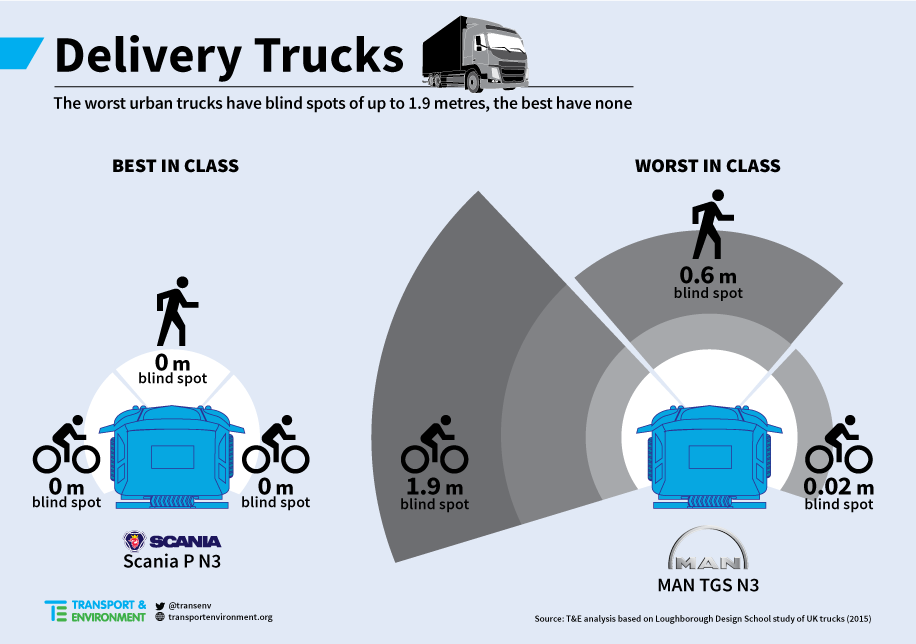
EU to embrace safer ‘direct vision’ trucks – but with 11-year delay
Proposals to make lorries safer for vulnerable road users such as cyclists and pedestrians have been announced by the European Commission. T&E has welcomed the basis for the new legislation, but says the Commission’s 2028 deadline for improved direct vision for trucks is too long and must be shortened.
Interested in this kind of news?
Receive them directly in your inbox. Delivered once a week.
Trucks will soon have to include cyclist and pedestrian detection systems, improved direct vision, intelligent speed assistance, and improvements to the rear of trailers so car drivers running into lorries suffer minimal damage.
Now the Commission has outlined proposals that will require all new trucks over 3.5 tonnes sold in the EU to have these new life-saving features. The proposal is expected after the summer, and could become law in 2018. But they envisage a date of 2028 for direct vision to become obligatory, a delay T&E considers unjustified.
‘Accidents caused by today’s trucks having blind spots are killing hundreds of cyclists and pedestrians each year,’ said William Todts, T&E’s clean freight director. ‘This is an entirely avoidable tragedy, and direct vision trucks are the solution. So it’s great news that the Commission is going to make direct vision trucks mandatory, but safer lorries are needed now, not in a decade. The 2028 deadline is unacceptable, and we expect the Commission to improve the proposal before it’s published as draft legislation later this year.’
A recent study from Denmark showed that the majority of truck blind-spot accidents could be prevented with better direct vision. And London announced in September that it will be banning lorries with poor vision from the city centre.
While representing only three per cent of vehicles on our roads, lorries are involved in a disproportionate number of collisions (over 15%), killing nearly 4,000 people each year. Many of these occur in densely populated urban areas such as cities. For example in London, 55 per cent of all bicycle deaths between 2008 and 2013 involved a heavy-duty vehicle (HDV), despite HDVs making up just four per cent of London’s road miles; 20 per cent of pedestrian fatalities in 2013 involved an heavy-goods vehicle in the city.
The Commission’s proposals for tightening safety rules also relate to cars, notably a requirement for new cars to be fitted with intelligent speed assistance and emergency braking systems.
